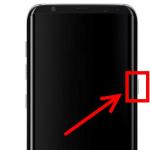An ordinary user begins to be interested in the device of the OS and its components only when something is broken. This also includes the BIOS - a system shell without a graphical interface, for which it has not received much popularity among users (as well as the cmd.exe command line). Consider what this utility is, how to use it, and, most importantly, how to roll back to initial parameters.
What is BIOS
This is the basic control of the system. Primary task and hardware manager. At BIOS help you can improve the system, activate those devices that Windows does not see. The basic and most important task is to work with equipment and devices that are connected to a PC in this moment.
Why reset
Often the current system configuration does not allow certain equipment to work normally (modems, flash drives, external sound cards). Roll back drivers or auto tuning system does not always help.
Also, on new operating systems (Windows 10, Windows 8.1), the equipment works with errors that are not perceived standard means operating system diagnostics.
When you need to reset the BIOS configuration
Most often, BIOS is remembered when the computer does not start or hangs at startup. Forgotten password or a bug at the start of the operating system also remind the user that there is such a tool as BIOS. However, a number of cases are described below that are solved through the BIOS.
If you need to reset the password to enter the BIOS (or the password to continue starting the OS)
For example, if the user has forgotten the password for account and further work not possible on the OS. If the message “Enter the correct password” hangs on the screen when you start the PC, then you need to contact the BIOS. We are talking about the password from the BIOS itself, and not from the account, although the reset general settings removes all passwords.
If the computer is not stable
Drivers or software components from third-party manufacturers often do not interact with the OS properly. For example, when you connect an external modem, the Internet disappears or other applications turn off.
If the computer does not boot the operating system
Another frequent signal of hardware incompatibility with the OS. There are only 2 options for the development of events:
- from time to time a different color "screen of death" appears. Usually blue, but other colors are available;
- The OS does not start, so as not to provoke an error.
The second option is undoubtedly better, as it does not allow the system to accumulate errors and does not disrupt its operation. The use of the computer has been deferred until the problem is completely fixed.
If you have changed the BIOS Setup configuration
Remember, at the beginning of the article there was a paragraph about improvisation? The BIOS can both improve system performance and disrupt it. The BIOS itself does not know what configuration the user needs. He can only follow commands. Independent actions, for which no instructions are provided, can only be performed by experienced users who are aware of their actions.
How to reset BIOS settings
Consider the most popular methods how to reset bios to factory settings that even a beginner can handle. Before carrying out operations, disconnect the computer from the network so as not to provoke short circuits or broken parts. After turning off the power, wait at least 10 seconds before restarting.
Reset BIOS Setup using the CLRTC jumper on the motherboard
In order to perform the operation, you have to disassemble system unit.
Jumper CLRTC on motherboard
- Remove the cover.
- Find the motherboard.
- On it, near the battery (which will be discussed below), you can see a small jumper.
- It must be removed and rearranged one division to the right (it is better to use tweezers for this).
- Press the power button (to discharge the capacitors).
- Move the jumper back.
- BIOS restarted.
The jumper looks like a small blue cube that switches between two positions. When restarting the capacitors, you also need to wait 10 seconds before and after the procedure, otherwise there is a chance of a breakdown.
We take out the battery
- Disassemble the PC, after disconnecting it from the network.
- Remove the battery (ordinary krone) next to the jumper.
- Press the power button to restart the capacitors.
- Insert it back.
- BIOS restarted.

The battery on the motherboard is when the battery needs to be replaced, as the metal is also susceptible to corrosion. If there are traces of rust or oxidation on the crown, feel free to change it, otherwise problems with the PC cannot be avoided.
Using BIOS Setup Options
This method is useful only when the user remembers the BIOS password.
- During PC startup, press the DEL (or F8) key.
- You need to go to the "Exit" tab and select "Load Setup Defaults".
- After that, the system will restart, and the settings will be returned to the default.

Options BIOS Setup
ATTENTION! If the user has installed a non-standard (custom) build of the system, his factory settings may differ from the usual ones. In this case, the reset can even hurt.
Moving through the menu is done through the arrows "Left" and "Right", and confirmation and cancellation of actions, the keys "Y" and "N", respectively.
For this method, you will need the unloved command line.
- Press the key combination Win+R.
- In the window that opens, type "debug" (without quotes).
- A command prompt will open.
- Enter there:
O 70 17
O 73 17
Q
(for AMI BIOS or AWARD)
or
About 70FF
O 71FF
Q
(for Phoenix BIOS) - BIOS restarted.

Debug utility to reset BIOS settings
Contrary to popular belief, you can paste copied text into the command line. Only this is done not by the standard combination CTRL + V, but by pressing right button mice on the field command line and selecting "Insert". If you enter data manually, you must respect all line breaks and spaces.
Jumper contacts with any metal conductor
The method is useful for laptop owners.
- Remove the battery.
- Locate the JCMOS pins on the surface of the motherboard.
- Between them you need to place a metal object (master key, screwdriver) for a couple of seconds. The contacts will close and the settings will return to factory settings.
Conclusion
We hope that this article has helped the reader understand what BOIS is and reset the settings. There is nothing super complicated in this, however, the following conditions must be observed:
- strictly follow the instructions without deviating from it. Any improvisation can lead to a dead end;
- record or remember the order of actions in order to be able to restore the chronology of events or roll back changes.
- have an operating system image on hand, or bootable flash drive(in case of failure).
If the computer is unstable, a few tips on how to reset the BIOS can help. Problems arise as a result of incorrect BIOS settings or software failures. We conditionally divide the zeroing procedure into two approaches, depending on the problem: software and manual.
In the CMOS settings, find the item responsible for resetting the default settings. It is called Load defaults BIOS, Load fail-safe defaults or something similar. It is located in a separate menu item or is always displayed in the right, lower part of the help window. It all depends on whether it is AMI or AWARD, which are different appearance, name and location of menu items.
Once you have found this option, press the function key enter or F5, F6, F9, F11, F12. Next, you will be prompted to confirm the changes, type the Y key or select OK and press ENTER.
When you have done all the steps, be sure to save the changes. The save and exit item and the F10 key are responsible for this. The computer will restart and the settings will take effect.

There are situations when failures occur immediately after turning on the computer. Therefore there is no possibility reset bios settings. There are a number of alternative actions that are manual.
The recommendations below are general. Suitable for such motherboards asus, asrock, gigabyte. They are similar in architecture, but differ in the arrangement of elements. Next, consider what elements we need.
We kindly request that before performing the steps described below, it is recommended to study the documentation of the motherboard. This will save you from unwanted consequences. You will be better guided in your actions.
1 way. Be sure to unplug your computer. When the PC is connected to the network, there is also a small supply of energy, which will prevent you from resetting the bios.
Remove the side cover. Take a close look at the motherboard. Here you will need to find the contacts closed by a jumper (jumper). Next to which it says Clear_CMOS, CLR_CMOS, СCMOS or in another way, more details in the description of your board.
There are 3 contacts, the first two of which are closed by a jumper. Move the jumper to pins 2-3 for 15 seconds, then switch the jumper back.

If there are only two contacts and they are without a jumper, close them with a metal object, such as a screwdriver.

2 way. If you have a modern motherboard, it may be equipped with a special button for BIOS reset, which is signed as CLR CMOS. Find and hold it for a few seconds to reset the settings to factory settings.

3 way. Not a very reliable method. It is necessary to remove the CMOS battery for at least 10 minutes, or even more. That is why this method may not bring the desired result. Who wants to wait a few hours? Sometimes it takes so long to reset the parameters.

After exposure, you must insert the battery back and start the computer.
It also happens that the owners are ready to throw out their components. I want to warn you against hasty conclusions. To get started, conduct a thorough diagnosis of your hardware. Often the problems lie not in the breakdown of individual parts, but in software failures.
In practice, it was such that the computer started up, but there was nothing but a black screen. The gradual replacement of components was not successful. The last thing that came to mind try resetting bios. Really helped.
Most of your PC's computer and time settings are stored in a system such as the BIOS. Many people ask such a question, how to reset BIOS settings to return to factory settings? I want to say that this question is asked not only by fans of climbing into the BIOS settings and changing them so that the computer will not turn on later, but also quite advanced users. However, it is human to err and we learn from it.
So, in this guide, I will consider several options. BIOS reset. A reset is needed in order to return to the factory settings, that is, the real configuration that you set up will be completely reset. In this case, those problems that often tormented you, for example, could not be loaded operating system. Another reset will help if there is a password and you forgot it.
I also forgot to say that the BIOS can be reset programmatically and physically. What are these two methods you will learn below.
Software reset method
Option 1 - reset using BIOS
You can also use the BIOS itself to reset the BIOS. Some do not know, therefore, our website already has an article about this, follow the link.
In older BIOS versions, we usually see blue screen with various items. So, all we have to do is select the item Load BIOS Setup Defaults. It may be named differently depending on the manufacturer of your laptop or motherboard. For example, there are also such names: Load Optimized Defaults, Load Fail-Safe Defaults.

Let's say in laptops we can reset the BIOS if we go to the tab exit and find a point there Load Setup Defaults.

As you can see, this parameter looks the same almost everywhere, just the words are rearranged somewhere or others are added. In , the reset is almost the same, the item is called Load Defaults and is in the section Save and Exit.
Option 2 - reset bios using the Debug utility
This utility is present in the Windows family, you just need to open the "Run" window using the keys Win+R and enter the command there debug. A window will open in which we enter the following commands in turn (for AWARD and AMI BIOS):
Physical reset method
Option 1 - Reset the BIOS using a jumper on the motherboard
Almost all motherboards are equipped with special jumpers that will help reset bios. You can see what this jumper looks like from the image below:

When we close the contacts, the operating parameters change in some way system board, in this case, the bios is reset. To carry out this operation, you need to perform several actions:
- This is the most important point. Turn off the power, first turn off the computer itself, then press the switch on the back of the system unit. For best results, unplug the power plug as well.
- Open the case of the system unit and find there, next to it there should be a jumper and has a signature, such as: CMOS RESET, BIOS RESET, CCMOS, Clear CMOS, CRTC, ClearRTC. Also, there should be two or three contacts responsible for resetting.
- If there are 3 contacts, we need to move the jumper to the second position, if there are 2 contacts, then to reset it is necessary to close these contacts with any conductive object, for example, a screwdriver and wait a bit - 20 seconds.
- If you are not sure how to use the jumper, then look about it in the documentation for the motherboard, everything should be written there.
I want to say that on modern and top motherboards there is even a special button CLR CMOS, which helps to quickly reset the BIOS.

Option 2 - removing the CMOS battery
An ordinary battery is responsible for the operation of the BIOS and the clock of the motherboard. To reset the time and CMOS memory, simply remove the battery, in this case the BIOS is reset, but for this you need to wait a few minutes, preferably 20 minutes, if it doesn’t help, then do the same operation, just wait a little longer, but usually it is not required.

There are some motherboards in which the battery is not removable, be careful and do not make any extra effort.
In order to remove the battery, you need to press the latch, and to insert it back, just press a little and the battery will snap into place.

I hope these BIOS reset methods helped you, if you have any questions, ask them in the comments.
Reset BIOS settings possible in three ways:
Note: BIOS models are different and therefore your BIOS may look different.

In the window that appears with a warning that the settings will be reset, select YES.

All BIOS settings have been reset.
Reset bios settings. Method 2
Each computer has a battery () that constantly supplies voltage in order to keep the computer BIOS settings not reset.

What should be done:
1. Turn off your computer.
2. Disconnect the computer power cord.
3. Remove the cover of the system unit.
4. Remove the BIOS battery.
5. Close the "+" and "-" contacts of the battery socket.

6. Wait 10 minutes.
7. Insert the battery back.
8. Assemble the computer system unit.
9. Connect all wires.
10. Turn on the computer.
Bios reset done.
How to reset bios. Method 3
Some motherboards have a special jumper with which you can reset the BIOS settings. It's called a jumper CLEAR_CMOS (reset BIOS). It is located next to the BIOS battery:

In order to reset the BIOS settings, you need to move the jumper to the position 1-2 :

Then wait 10 seconds and put the jumper back in position 2-3 .
Article content:
This article will discuss the ways in which you can reset the BIOS settings on your computer or laptop in case of any problems in its operation.
Useful related articles
Why do I need to reset BIOS / UEFI settings?
Sometimes, for a variety of reasons, it is necessary to reset the BIOS "a settings of the computer (motherboard). These settings store most of the parameters that are responsible for the operation of the computer and all its devices. Below are several ways to reset these settings to default values .
Resetting BIOS settings through the BIOS menu
This method is suitable if it is possible to access the BIOS when the computer is turned on. To do this, when you turn on the computer, press a special button that is responsible for entering the BIOS settings "a. Most often, this button is the Del (Delete) button.
Further actions depend on the manufacturer of the motherboard, and the BIOS "a in it. It should not be difficult to distinguish which BIOS in the motherboard visually, just look at the explanatory pictures for the instructions for each type of BIOS" a.
Reset BIOS settings in Award Bios

Use the keyboard to navigate to "Load Optimized Defaults". Press the Enter key, then select "OK" with the keyboard arrows when prompted for confirmation. Press Enter.

Now go to the item "Save & Exit Setup". Press Enter, after which the computer should go into reboot, and the BIOS settings should be reset.

Reset BIOS settings in Phoenix Bios

Keyboard arrows (left, right) go to the top menu tab called "Exit".

There we find the item "Load Setup Defaults". Select it with the up and down arrows and press the Enter key. A window will appear in which you need to confirm your desire to reset the BIOS settings - select "OK", and press Enter.

Now you need to select the item "Exit & Save Changes".

We go there, press Enter, if it asks for confirmation, select "OK", and press Enter again. The computer should restart and reset the BIOS settings.
Reset BIOS settings in ASRock UEFI BIOS
In the top menu, go to the "Exit" tab.

Select "Load UEFI Defaults".

To the question "Load UEFI Defaults?" we answer "Yes".

Now select "Save Changes and Exit".

To the next question in the form of "Save configuration changes and exit setup?" we answer "Yes".

After that, the BIOS settings will be reset and the computer will restart.
Reset BIOS settings in ASUS UEFI BIOS
Maternal ASUS boards there are two UEFI interfaces - one was used on old motherboards that came out before about 2014, the second is used on all motherboards today. Therefore, if you do not visually recognize the interface of your BIOs / UEFI, do not rush to close the page with this instruction, but simply scroll on.
First option
In the lower right corner, look for the "Default (F5)" button and click on it.

A window will appear asking you to confirm the action to be performed. Select "OK".

Now the main menu will open before us again. In the upper right corner we find the button "Exit / Advanced Mode", and click on it.

Select "Save Changes & Reset".

The computer will reboot and the BIOS settings will be reset.
Second option
Press the key F5, or on the button " Default (F5)" at the bottom of the screen.

In the window that appears, select " OK", or press the Enter key.

Then select " Save&Exit(F10)" (or press the F10 key).

And press again OK", or the Enter key.

Reset BIOS settings in MSI UEFI BIOS
In the BIOS main menu, select "Mainboard settings" ("Settings").

Select "Save & Exit".

In the menu that opens, select "Restore Defaults".

A window will appear asking you to confirm the action - "Load Optimized Defaults?". We answer "YES".

Now you need to exit, saving the reset BIOS settings. To do this, go to the "Save Changes and Reboot" item.

When asked if we really want to reboot - Save configuration and reset - we answer "YES.

After that, the computer will restart and its BIOS settings will be reset to the default settings.
Reset BIOS settings by removing the battery
First you need to turn off and disconnect the computer.

To do this, you need to find the power supply on the back of the system unit, and turn it off with a special button. Also, it will not be superfluous to pull the power cord out of it, this is necessary if there is no power switch.

Inside you need to find a round CR2032 battery, most often it is located at the bottom of the motherboard. In order to remove the battery, you need to press a special holder.

After the battery is pulled out, you need to hold down the power button for 10-15 seconds. Since the system unit is de-energized, it will not turn on, but it will finally discharge any available accumulated electricity in the computer. At the same time, the BIOS settings will be reset.

Now you can close the system unit by replacing the cover, plug in the power cord and turn on the power supply, after which you can turn on the computer.
Reset BIOS settings via jumper
We de-energize the system unit by turning off the power supply with a special switch located near the entrance to the power wire.


Next, remove the cover of the system unit, and get inside the computer. Now we are looking for a special jumper on the motherboard. It looks like a blue (in most cases) jumper that is connected to two pins, there should be three pins in total. Typically, such a jumper is labeled as "Clear CMOS", "CLR", "CLEAR", "PSSWRD".

To reset the BIOS, this jumper must be moved one pin to the side. Those. Initially, the jumper closes pins 1 and 2 - we need to plug it into pins 2 and 3.

After that, you need to hold down the computer's power button for 10-15 seconds, for the final discharge of the remaining electricity in the system unit. After that, the BIOS settings will be reset.

We return the jumper to its original place (pins 1 and 2), close the system unit, plug the power cord back in and turn on the power supply, and then the computer.
Was this article helpful to you?
Yes Not
0 characters
send a message




